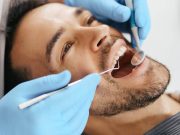Despite the fact that many studies have already found that e-cigarettes are significantly safer than tobacco cigarettes, misinformation and bad publicity about the products keep spreading incessantly. Hence many health experts and government regulators had been sitting on the edge of their seats awaiting the first results of the Population Assessment of Tobacco and Health (PATH) study, which were published in Preventive Medicine.
Majority of vapers are ex-smokers
The study which was funded by the National Institutes of Health and the Center for Tobacco Products, consists of an ongoing national survey of tobacco use of over 30,000 participants comprised of both young and mature adults. The researchers have been filtering the responses given, by looking for regular smokers and vapers, which left them with a total of 3,586 participants. Five percent of these were vapers, while the remaining 95% were smokers. From the 5% e-cigarette users, 93% were ex-smokers, while the other 7% only experimented with cigarettes.
Where it comes to vapers, researchers found that they tend to use their products later in the morning after waking up, in comparison to smokers. Additionally they were found to have less cravings, found it easier to refrain from using the products in restricted areas, and were less likely to consider themselves as addicts.
The harm reduction potential of vaping, indicated once again
All of the participants included in the survey were specifically chosen as they were considered as dependent on e-cigarettes or cigarettes due to regular use. However the study’s lead author, Guodong Liu, an assistant professor of public health sciences, said that the findings clearly indicate that vapers are not as addicted to their products as smokers. “No doubt about it, e-cigarettes are addictive, but not at the same level as traditional cigarettes,” said Liu.
Follow-up studies are to be carried out, with participants required to hand in blood and urine sample, in order to ensure that participants’ nicotine levels agree with their self-reported dependence. Additionally the researchers also plan to analyze dual users of both e-cigarettes and combustible cigarettes, in order to be able to look at a complete spectrum of vapers.
“We suspect that most e-cigarette users are either experimental users or dual users of e-cigarettes and at least one type of traditional tobacco product, like cigarettes,” Liu said. “We want to learn if dual users’ dependence levels differ from each other and also from exclusive e-cigarette or cigarette users.”
Results that will be informing policy
Thankfully the PATH study findings are expected to have a direct influence on future e-cigarette regulations, which means that the current unreasonable and harsh regulations that the FDA has implemented, could be reversed as a result.
“This will be the first time we’ll be able to look at this phenomenon longitudinally,” Liu said. “Before that, almost all of the surveys were cross-sectional, meaning they were just snapshots.”
Liu G., Wasserman E., Kong L., & Foulds J. A comparison of nicotine dependence among exclusive E-cigarette and cigarette users in the PATH study. Preventive Medicine, 2017













I will be smoke free four years as of this coming September due to vaping. My blood pressure is much better, and i don’t wake up hacking up a lung every morning. It is the beset decision health wise I have ever made for myself besides quitting drugs, which as of this past June 1st i have been clean ten years.:)
Next October will mark 3 years since I switched from smoking to vaping. Vaping is a superior experience, I feel better, and by October I will have avoided spending $9,000 on cigarettes. My cost of ingredients for a year supply of e liquid I make at home for personal use is $25. The regulators aren’t trying to protect me. They want me paying tobacco taxes because that funds their employment. They need to shut up and butt out of the conversation.